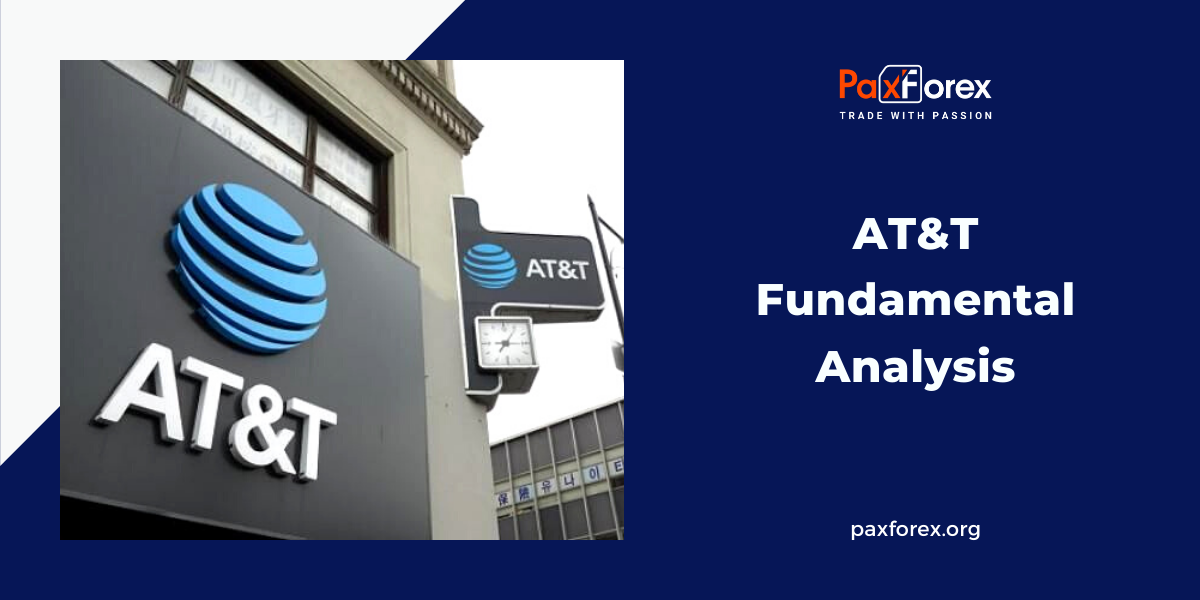
Source: PaxForex Premium Analytics Portal, Fundamental Insight
AT&T's stock has finally turned around after spending a considerable time trading below $20 per share. Last August, the stock hit a 52-week low of around $14 amid a decline. However, since then, AT&T's financial performance has shown promising signs, leading to a recovery. The stock reached a 52-week high of $19.99 this August and remains close to that level at present.
With this recent uptick in its stock price, is AT&T a good buy now? Absolutely. Here are a few reasons why this telecom giant is poised for long-term success.
One of the key reasons AT&T is an attractive investment is the growth in its core businesses: mobile phone service and fiber-optic internet. When John Stankey became CEO in 2020, he refocused the company on these sectors, shedding non-essential businesses to return to its telecommunications roots.
AT&T's transformation is now complete, and its focus on these two businesses is paying off with both customer growth and revenue increases. For example, in Q2, AT&T expanded its number of postpaid phone subscribers from 70.3 million to 71.9 million year-over-year.
This growth fueled a 3.4% year-over-year increase in mobile services revenue, bringing in $16.3 billion in Q2, which accounted for over half of the company's $30 billion total revenue for the quarter.
AT&T is also growing its fiber-optic internet customer base. Fiber subscribers rose to 8.8 million in Q2, up from 7.7 million in the same period last year. This expansion led to an 18% year-over-year surge in fiber revenue, totaling $1.8 billion in Q2.
The synergy between AT&T's mobile phone service and fiber internet is a major driver of its success. In Q2 last year, 38% of fiber customers also subscribed to the company’s mobile services, and that percentage increased to 40% this year. As Stankey put it, "Where we have fiber, we win."
When John Stankey stepped in as CEO, AT&T faced significant debt, which contributed to its declining stock price. Under his leadership, the company has made strides in cutting both operational costs and debt levels.
In the second quarter, AT&T reduced its long-term debt by $2.2 billion, bringing its net debt to $127 billion. Although this figure is still considerable, AT&T is focused on achieving a net debt-to-adjusted EBITDA ratio of around 2.5 by the first half of 2025.
Additionally, AT&T is targeting run-rate cost savings of over $2 billion by 2026. These efforts have already helped the company increase its free cash flow (FCF) to $4.6 billion in Q2, up from $4.2 billion in the same period last year.
For this year, AT&T projects at least $17 billion in FCF, an improvement over the $16.8 billion generated in 2023. FCF is crucial, as it indicates the cash available for reinvestment, dividend payments, and debt reduction.
With rising FCF and a declining debt load, AT&T is well-positioned to sustain its generous dividend - a key reason to consider the stock. Although the company hasn't increased its dividend recently, it currently offers an attractive yield of 5.6%, making it a reliable source of passive income. AT&T has been paying dividends since 1984.
Despite its recent stock gains, AT&T remains undervalued. The company's price-to-earnings (P/E) ratio is the lowest among major telecommunications players like Verizon and T-Mobile, meaning investors are paying less for a share of AT&T's earnings.
This low P/E ratio has led to a consensus among Wall Street analysts who rate AT&T stock as overweight, with a median price target of $22, representing a 12% upside from its recent closing price.
AT&T's appeal also lies in its innovative projects, such as leveraging its 5G network in partnerships with automakers like Ford and Rivian to provide wireless connectivity in vehicles. Additionally, the company is exploring satellite-based wireless phone service, which could attract customers in rural and remote areas.
With consistent growth in its core businesses, improving debt and cash flow metrics, stable dividend payments, and a stock that's still undervalued, AT&T presents itself as a strong long-term investment opportunity.
As long as the price is above $19.50, follow the recommendations below:
- Time frame: D1
- Recommendation: long position
- Entry point: 19.77
- Take Profit 1: 20.50
- Take Profit 2: 21.00
Alternative scenario:
If the level of $19.50 is broken-down, follow the recommendations below:
- Time frame: D1
- Recommendation: short position
- Entry point: 19.50
- Take Profit 1: 19.00
- Take Profit 2: 18.50













